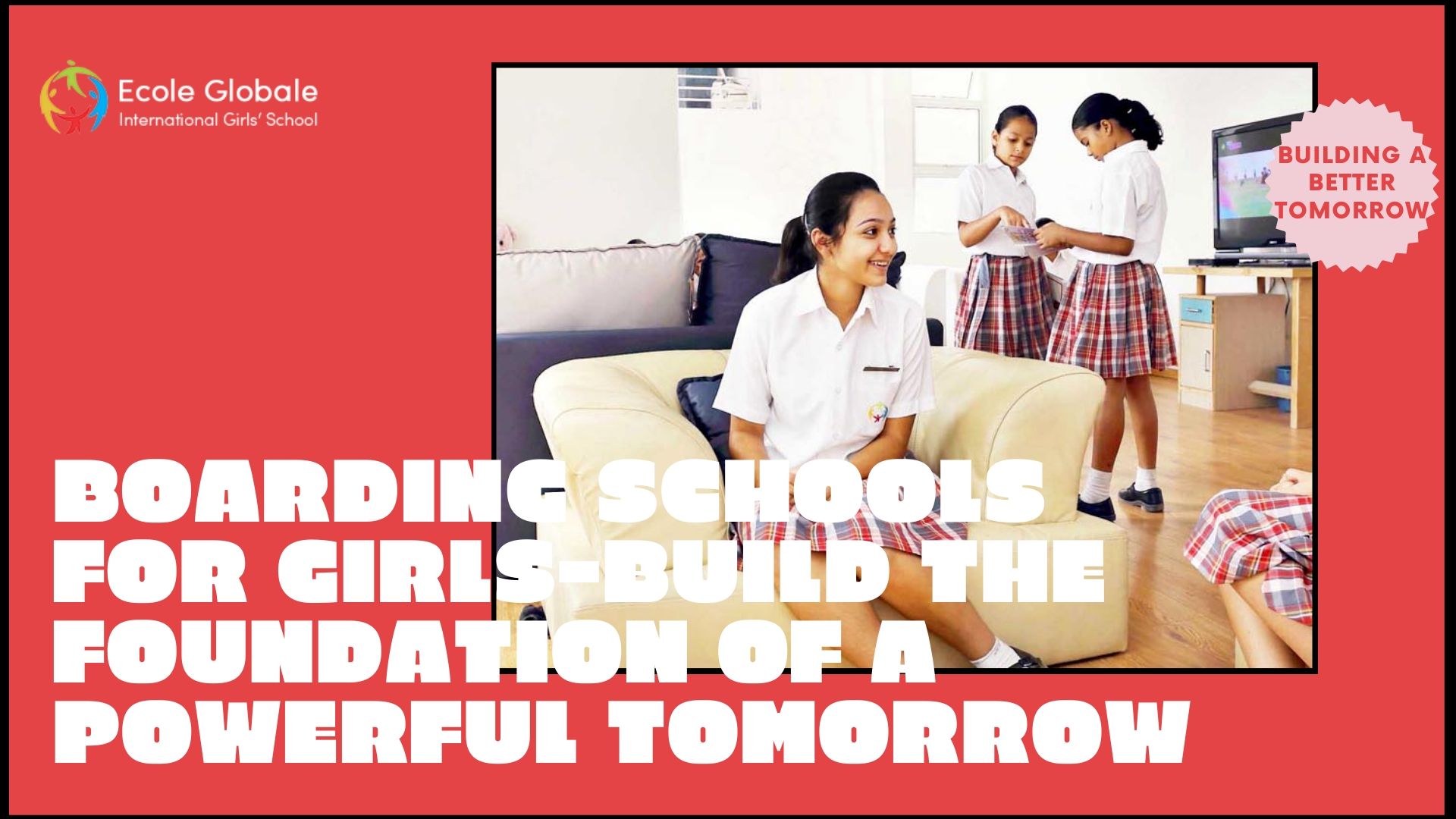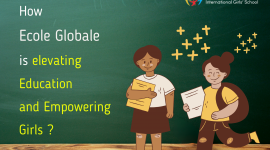Education is a right, and it shouldn’t be discriminated based on gender, caste or creed. Girls’ boarding school in India have understood this and have been serving for the betterment of the society by educating these young girls so that they too have a bright and successful future.
Each bit of research directed by several associations, groups, colleges and research organizations will reveal to you that young girls going to a Girls’ boarding school in India and getting an education is a distinct advantage for families, networks and societies at large. Ecole Globale school is a classic example for lifting the female education standards in the country. This school has achieved great heights in delivering supreme education to the young girls of the nation. Following are the reasons why young girls need to get a good education-
1- Expanded monetary development
Even in the present times’ many young girls are deprived of receiving an education so on the off chance that young girls can go to class and get instruction, it implies they are bound to find a new line of work, earn money and produce good products and be masters of enterprises. In some developing countries, the World Bank estimates that putting resources into young girls’ instruction could build their GDP by as much as 1 percent.
2- Better wages and occupations for girls
Young girls make up most of the world’s 628 million jobless youngsters who have no education to support a living. Numerous young girls go to elementary school however on the off chance that a young girl can make it to high school, each year they remain in school will, in the long run, lift their wages by 10–20 percent. Research additionally shows that most girls contribute 90 percent of their salary into giving nourishment and training for their children and family.
3- It spares the lives of youngsters and their moms
A 58-nation study authorized by UNESCO demonstrated that widespread essential training for young girls would diminish child mortality by 15 percent. Going to school implies young girls have fewer pregnancies and are less inclined to conceive a child as adolescents. The impact of young girls’ education is more noteworthy than the impact of some regular well being mediation.
4- Little and increasingly feasible families
Girls with more elevated levels of training have fewer kids. In particular, diminishing the number of young girls conceiving a child before the age of 17 would advance a little more thus more advantageous and functional families. If all the girls had essential education, early births would drop by 10 percent, and if all girls had supplementary training, early births would fall by a further 10 percent.
5- More advantageous and better-taught kids
Better learned moms have more advantageous and better-instructed children who are bound to profit by sufficient nourishment and immunizations, go to school longer and all the more routinely, and concentrate more on building a sustainable life. All things considered, each extra year a mother goes to school prompts her kids to remain longer at school.
6- Decreased HIV/AIDS infections and other STDs
Young girls’ education is once in a while called the “social immunization” against HIV/AIDS in light of the fact that there is an immediate connection between young girls who remain at school and a critical decrease in the illness. Better-educated young girls have more information about how HIV is contracted and spread; therefore, is taught to be careful regarding their own health. On the off chance that every young adult finished essential education (a bachelor’s degree at the least), we could expect 700,000 less new patients of HIV disease every year or 7 million less in 10 years.
7- Less early relationships
Excellent training for young girls is a basic procedure to forestall child marriage and improve the lives of young girls who are as of now married. Across 18 of the 20 nations with the most elevated pervasiveness of child marriage, young girls with no training are up to multiple times bound to get wed as compared to young girls with the necessary education. Child marriage abridges young girls’ education as well as puts young girls at a higher danger of early pregnancy and difficulties during labour.
8- Engaged girls
Research from the World Bank shows that informed young women and girls are better ready to settle on choices and have more options. They are more averse to acknowledge abusive behaviour at home, they’re ready to settle on choices about how to run their homes, and they can move around more uninhibitedly in their networks.
9- Political administration
Regardless of whether it’s in the home, within the social network or administration of their nation, educated girls are bound to volunteer and become good examples in the event that they have been to school or had some professional training.
10- Decreased damage to families from catastrophic events and environmental change
Around the globe, girls with significant levels of training are better ready to deal with a catastrophic emergency. They can shield themselves and their families from the impact of cataclysmic events since they can give superior care for their children. Deaths because of calamity could be diminished by 60 percent by 2050 if 70 percent of girls completed their elementary school.









